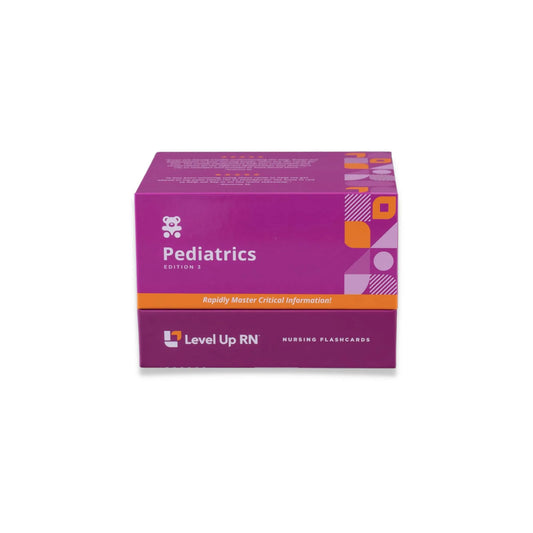Hi, I'm Cathy with Level Up RN. In this video, I will be discussing appendicitis. And at the end of the video, I'm going to give you guys a little quiz to test your knowledge of some of the key points I'll be covering. So definitely stay tuned for that. And if you have our Level Up RN Pediatric Nursing flashcards, go ahead and pull out your flashcard on appendicitis so you can follow along with me.
Appendicitis is inflammation of the appendix, which is a tube-like organ that is attached to the first part of the large intestine. So nobody really knows what the purpose of the appendix is in the body, but inflammation of the appendix is a fairly common disorder. So with appendicitis, the opening of the appendix becomes obstructed. So examples of things that can cause this obstruction include a fecalith, which is a mass of hardened fecal matter, as well as an infection or tumor, for example. And then with this obstruction, this, in turn, causes inflammation as well as ischemia and bacterial overgrowth in the appendix.
The hallmark symptom of appendicitis is right lower quadrant abdominal pain at McBurney's point, which is shown in the image with a 1. So our Cool Chicken hint to help you remember this important information is you really feel the burn with appendicitis. So the R in really helps you to remember that the pain is in the right lower quadrant and the burn helps you to remember McBurney's point. Other signs and symptoms of appendicitis include rebound tenderness, lack of appetite, nausea and vomiting, fever, and an increase in white blood cells.
Appendicitis is most often diagnosed with a CT scan and treated with an appendectomy, which is removal of the appendix. Prior to the surgery, your patient will need to be kept NPO, and IV fluids and electrolytes will need to be administered. As the nurse, you definitely need to monitor for key complications of appendicitis. One such complication is perforation or rupture of the appendix. So if your patient verbalizes sudden relief of their pain, that is a huge red flag that their appendix may have ruptured. So rupture of the appendix can lead to peritonitis, which is inflammation of the peritoneum, which is the membrane that lines the abdominal cavity. Signs and symptoms of peritonitis include a stiff board-like abdomen, which is a key symptom that you definitely have to know in nursing school, as well as nausea and vomiting and abdominal pain and distention.
All right. It's quiz time. And the things I'm going to ask you about are definitely things that you have to know in nursing school and for your exams. Okay. I've got three questions for you.
Question number one. What is the name of the location in the right lower quadrant where a patient with appendicitis often feels pain?
The answer is McBurney's point.
Question number two. If a patient with acute appendicitis indicates their pain has suddenly gone away, what do you suspect has occurred?
The answer is you suspect that their appendix has ruptured.
Question number three. What complication of a ruptured appendix is characterized by a stiff board-like abdomen?
The answer is peritonitis.
All right. I hope you did great with that quiz. Thank you so much for watching. Take care, and good luck with studying.


